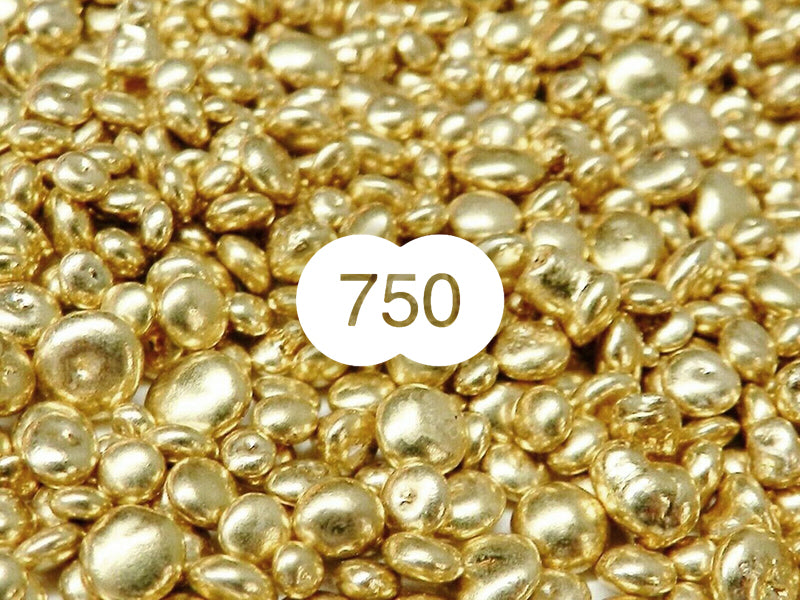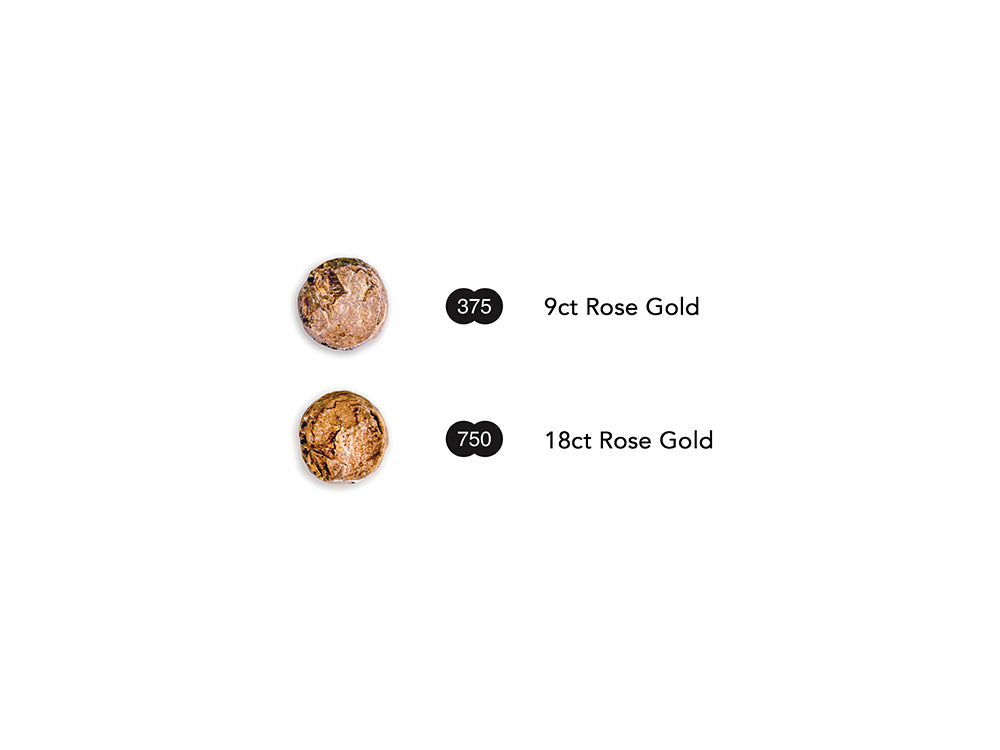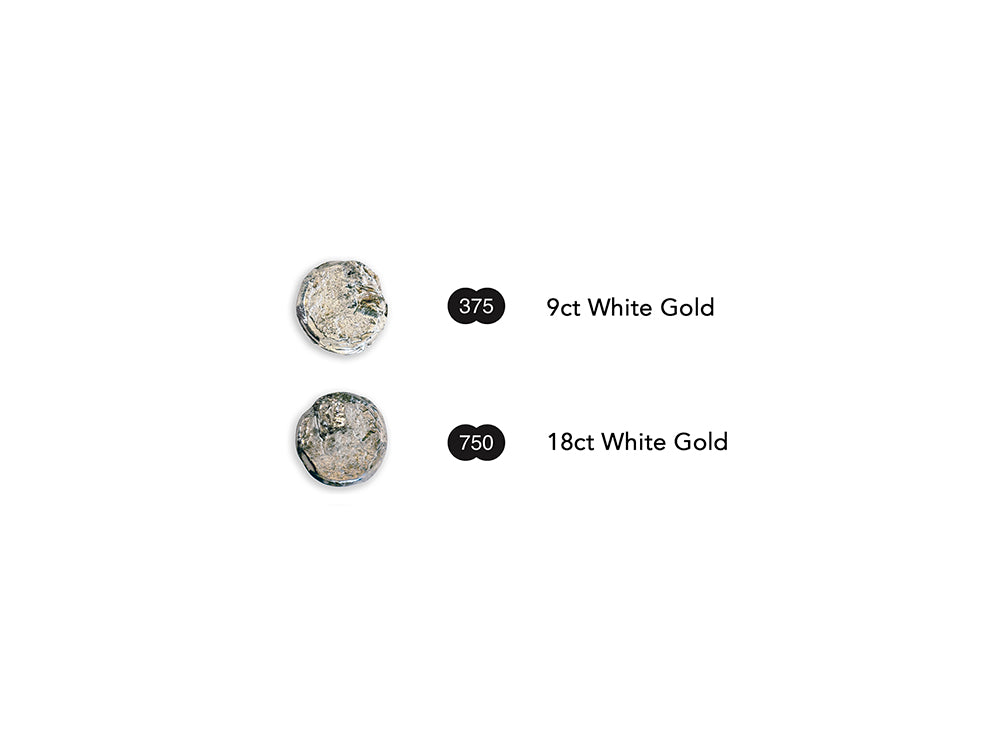MEET YOUR METALS
All Alicia Hannah Naomi jewellery is made from non-allergenic, solid precious metal alloys of Sterling Silver, 9ct Gold and 18ct Gold.
Scroll down to learn more about these metals.
THE ALLOYS
925
STERLING SILVER
Pure Silver is considered too soft for daily wear as jewellery, so the pure metal is alloyed (mixed) with a little Copper to get its strength and durability.
Sterling Silver is 92.5% pure Silver and 7.5% Copper. The Australian standard hallmark for Sterling Silver is the number 925 inside an oval.


375
9CT GOLD
Like Sterling Silver, pure Gold is also too soft for daily wear as jewellery; so, to increase its strength and durability, pure Gold is alloyed with other metals such as Silver, Copper, and Palladium, resulting in the different carats (and colours) of Gold.
9ct Gold is 37.5% pure Gold. As this alloy contains a lower amount of pure Gold, 9ct Gold is a paler looking tone than it's purer counterpart 18ct Gold.
The Australian standard hallmark for 9ct Gold is the number 375 inside two conjoined circles.
750
18CT GOLD
18ct Gold is 75% pure Gold. As this alloy contains a higher amount of pure Gold, 18ct Gold is a deeper, richer tone than it's less pure counterpart 9ct Gold.
As this alloy contains a high amount of pure Gold, it is considered very strong, durable and flexible.
The Australian standard hallmark for 18ct Gold is the number 750 inside two conjoined circles.

TONES OF GOLD

YELLOW GOLD
Pure Gold is naturally a rich yellow in colour.
The Yellow Gold alloy consists of pure Gold, Silver, and Copper, mixed in just the right proportions to keep the tone Yellow.
9ct Yellow Gold is more subtle and light-toned yellow than 18ct Yellow Gold, which is deeper and richer in tone.
ROSE GOLD
Rose Gold is a mixture of pure Gold, Silver, and a higher percentage of Copper than Yellow Gold, which is how it gets it’s romantic warm pink/red hue.
9ct Rose Gold is paler and pinker in tone; 18ct Rose Gold is a deeper redder shade.


PALLADIUM WHITE GOLD
White Gold alloys can vary from country to country. Alicia works exclusively with White Gold that is a mixture of pure Gold and Palladium to achieve it's colour.
Palladium is a very valuable and high quality precious metal. The use of it in the White Gold alloy makes it more expensive per gram than Yellow or Rose Gold.
As almost all White Gold tends to have a natural warm greyness to it's tone regardless of what alloys it includes, White Gold jewellery from commercial/big-box jewellery brands is often plated with a metal called Rhodium to give it a bright white shine. Over time this plating wears off, exposing the true greyer colour of the gold underneath.
Alicia does not Rhodium plate her White Gold and the colour you receive will appear as pictured, in its natural alloyed tone.
9ct White Gold is a paler shade of grey, closer in appearance to unoxidised Sterling Silver. 18ct White Gold is a deeper shade of grey, closer in appearance to oxidised Sterling Silver.
Which metal is the best choice for wedding and engagement jewellery?
As future heirlooms, wedding and engagement jewellery are lasting testaments of your love and devotion.
The very best choice for wedding and engagement jewellery is 18ct Gold. It's high percentage of pure gold and blend of additional alloys gives this metal the ideal combination of strength, durability and flexibility.
9ct Gold contains a robust mix of alloys for strength, durability and affordability, and is a very good choice for wedding and engagement jewellery. However, as it contains a lower percentage of pure Gold, it is slightly more brittle than 18ct Gold.
Although Sterling Silver has added copper for durability, it contains an extremely high amount of pure Silver. This means that Sterling Silver is still considered to be quite soft, and therefore less robust; so is not an ideal metal choice for wedding and engagement jewellery.
If you wish to choose Sterling Silver for your wedding and engagement jewellery you should be prepared that you may need to replace your rings after several years of wear.
What about Platinum?
Platinum is a popular precious white metal alloy for jewellery, particularly for wedding and engagement jewellery. It is an alloy of 95% pure Platinum and a mix of other metals, such as Ruthenium, Copper, Cobalt, Iridium, or Palladium.
Platinum is very expensive. Due to it's extremely high amount of pure Platinum, it is considered very soft and is known to scratch and burnish easily, which is not compatible with Alicia's highly detailed textural work, and cost-prohibitive to replace. Platinum is an alloy best suited to smooth, sleek, polished designs; where the wear-and-tear is less visually impactful.
Why doesn't your studio use 10ct or 14ct Gold?
The Alicia Hannah Naomi studio is based in Australia and uses Australian gold standard alloys. 10ct and 14ct are not Australian standard alloys and are more commonly seen used across the Americas and Europe.
Alicia can source 14ct Yellow Gold alloy upon request. Please submit a Customisation Request to the studio to enquire about crafting your desired item in 14ct Yellow Gold. 14ct Rose Gold and 14ct White Gold are not available.
